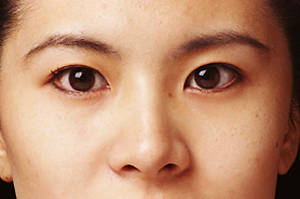
 |
|
 Protective Eyewear Human eyes have a certain degree of natural protection, but every year, thousands of people suffer accidental eye injuries. Many injuries could be prevented if people would wear proper eye protection. Here are some types of safety eyewear that can protect your eyes from hazardous situations. Remember to wear the proper protection at work and when working around the house or yard. Impact resistant spectacles provide limited protection from the front. By law, prescription eyewear must be impact-resistant, but this does not mean they are shatterproof. Industrial strength safety glasses provide much more frontal protection against flying objects. They contain specially treated glass, plastic or polycarbonate lenses that meet industrial safety lens standards. Of all the materials, polycarbonate is the most impact resistant. These lenses should be mounted in special safety frames designed to hold the lenses securely in place under heavy impact. Studies show that lenses of more than 2mm thick are less likely to fall out of the frames under heavy impact. For additional protection, various types of side shields can be attached to the sides of the frames. Use with side shields for machining, light grinding or woodworking. Safety goggles offer significant frontal and side protection against the danger of flying objects. If you wear glasses, you can wear most goggles over your regular glasses for protection and good vision. Use for heavy grinding and chipping. Face shields protect your eyes from chemical splashes and from some flying particles, but they are not made for heavy impact. If you are working with highly toxic or unstable chemicals, you should wear goggles under the face shield. Use for laboratory work and liquid chemical handling. Welding goggles and shields contain special absorptive or filter lenses for protection against welding rays, sparks or flying particles. Wear when welding or working around welding. Sunglasses can protect your eyes against the harmful rays of the sun. To provide adequate protection sunglasses should: 1) Block out 99 to 100 percent of both UV-A and UV-B radiation; 2) Screen out 75 to 90 percent of visible light; 3) Be perfectly matched in color and free of distortion and imperfection, and; 4) Have lenses that are gray, green or brown. If you wear contact lenses, you can now enjoy an added measure of protection. Contact lenses are now available with a UV blocking feature. These contact lenses should not be worn in place of your sunglasses, but do provide additional protection by blocking much of the UV radiation that can seep in from above and below your sunglasses. It is also a good idea to wear a hat or cap with a wide brim if you are in the sun. Sunglasses that are worn while you participate in eye hazardous work or sports should be made of 2mm thick polycarbonate. Eye protection is also a major concern to all sports participants, especially those playing certain high risk sports. These include racquetball, tennis, squash, handball, ice hockey, badminton, archery, baseball/softball, fencing, boxing, karate and any sport with a projectile. There are many types of sports eyewear available in either prescription or non-prescription lenses. Ask your doctor of optometry which one is best suited for your sport. The lenses in your protective eyewear should provide clear, comfortable vision with little distortion. Excessively scratched, pitted or chipped lenses can lose their impact resistance and should be replaced. Eye protective equipment should fit snugly and correctly. Straps, frames and other parts should be durable and fit comfortably. Your doctor of optometry can offer advice about what eye protection you need. First Aid When eye injuries occur, knowing how to deal with them can mean the difference between minor eye damage and permanent injury, or even blindness. Here are some first aid suggestions for eye injuries. But, please remember, these suggestions are only first aid. It is important for you to contact your eye doctor as soon as possible for any eye injuries. If you have a foreign object in your eye, don't rub it. Lift your upper eyelid outward and gently pull in down over the lower lash. This causes tears to flow and often wash the object out of your eye. You may have to repeat this several times. If the object does not wash out, contact your doctor of optometry. Do not try to remove a particle that is embedded. You can cause more damage. If you are wearing contact lenses, remove the lens and clean it thoroughly before putting it back in your eye. If discomfort persists, remove, clean again and reapply. If discomfort continues, remove the lens and call your doctor. For chemicals splashed in your eyes, immediately flush your eyes with cool water for at least 15 minutes. If possible, hold your head under a slowly running faucet, or pour water slowly from a glass or clear container. Seek professional attention immediately. If you are wearing contact lenses, remove them immediately. Then flush your eyes and seek professional help as described. A blow to your face resulting in a black eye can be treated with cold compresses for about 15 minutes every hour. Your eye should be checked by your doctor for internal damage. If the blow breaks your contact lenses, try to remove pieces of the lens immediately. Rinsing with water will help. Then call your doctor of optometry. Do not try to treat a cut, laceration or penetrating eye injury. Do not flush the eye with water or put any medicine in the eye. If you are wearing a contact lens, don't try to remove it. Gently cover the eye with a bandage or gauze pad and go directly to your doctor or a nearby hospital. Remember, the best way to treat eye injuries is to prevent them from happening in the first place. Don't forget to be aware of potential eye hazards and wear appropriate eye protection. |
|
Store Hours, All Locations: 9-9 M-F 9-6 Sat closed Sun Don't miss our coupon page! |